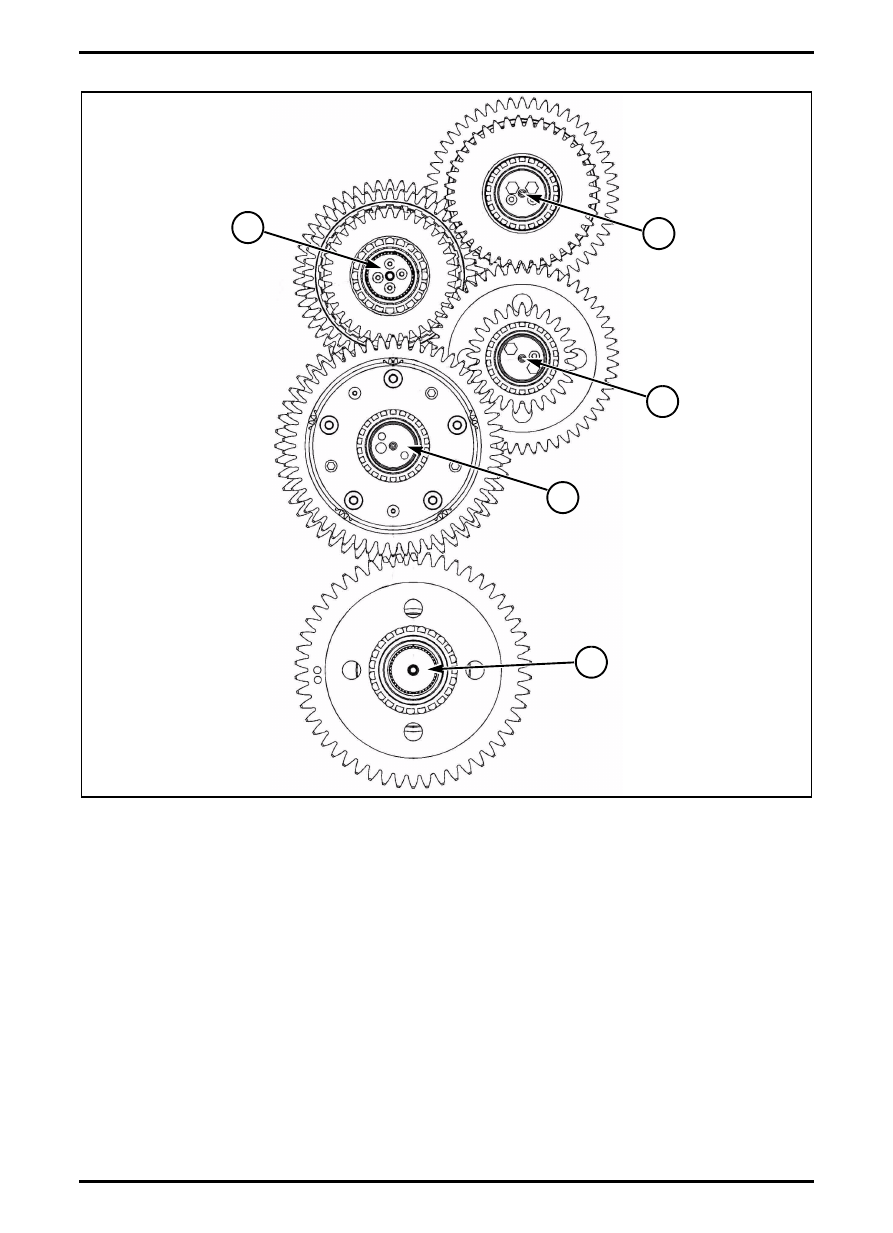Challenger Terra Gator 3244 Chassis. Manual - part 27

627333-A
3-21
Transmission and Solenoids
Front view Transmission
1. Input Shaft;
7. Intermediate Shaft;
13. Ouput Shaft;
18. Transfer Shaft;
19. Reverse Shaft
Power flow for reverse gears only involves the clutches
on the shaft:
•
Reverse Shaft (19);
•
Output Shaft (13).
The different solenoids resembles the different clutches.
When a combination of solenoids is engaged, the
specific gear will be set.
Each gear has its own combination of solenoids. No
more than two clutches are engaged at the time. Also,
no more than one clutch is engaged at the time on any
shaft. The different combinations of solenoids is
regulated by the TCU.
For the reverse gear, input shaft (1) is used only to
transfer power flow through gear (10). For reverse
gears, intermediate shaft (7) is used only to transfer
power flow through gears (8), (11) and (15). This gear
are permanently splinted to the shafts. The gears will
always rotate with the shaft.
FIG. 20
Q000062S
18
13
7
19
1